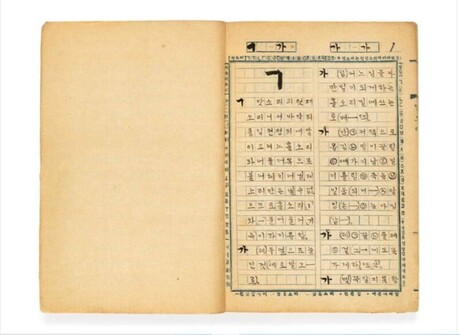Renowned Vietnamese artist Trần Lương embarked on an unusual interactive performance during the opening weekend of his first exhibition in New Zealand, inviting members of the public to lead him blindfolded through locations of their choosing. The performance took place at Pukekura Park and Ngāmotu Beach in New Plymouth as part of his comprehensive survey exhibition "Tầm Tã - Soaked in the Long Rain" at the Govett-Brewster Art Gallery/Len Lye Centre.
The blindfold performances represent Trần Lương's distinctive approach to understanding and connecting with local communities wherever he exhibits his work. "Each time I return to a place, at best I manage to 'see' just a small hidden corner of life," the artist explained. "This time, it is about voluntarily giving myself to strangers along the way, as a form of research, exchange and trust." Through this vulnerable act of placing himself in the hands of strangers, the artist seeks to build meaningful connections and gain deeper insights into the communities he encounters.
"Tầm Tã - Soaked in the Long Rain" spans three decades of Trần Lương's multifaceted artistic career, showcasing his work across various mediums including painting, performance art, installations, community engagement, and institution-building. The exhibition is exclusively showing in New Plymouth, marking a significant cultural milestone as the artist's debut presentation in New Zealand. Born in Hanoi in 1960, Trần Lương's formative years were profoundly shaped by the American-led bombing campaigns against North Vietnam from 1965 to 1972, experiences that would later influence his artistic vision and social consciousness.
Beginning his career in the 1980s, Trần Lương emerged as a member of the groundbreaking "Gang of Five," a collective that challenged conventional artistic boundaries by staging exhibitions in friends' apartments and semi-underground spaces. This early period of working within constraints and alternative venues would prove instrumental in shaping his understanding of art's potential for social transformation. As Vietnam underwent dramatic economic, political, and social changes, the artist's practice evolved accordingly, moving toward conceptual and performance art during the 1990s.
A pivotal moment in Trần Lương's career came in 1998 when he co-founded Nhà Sàn Studio, Vietnam's first artist-run space dedicated to experimental art. This groundbreaking initiative provided a crucial platform for artistic innovation and collaboration in a country where such spaces were virtually nonexistent. The studio became a beacon for emerging and established artists seeking to push creative boundaries and engage in meaningful dialogue about contemporary issues.
In recent years, Trần Lương has expanded his practice to include collaborative work with indigenous communities in central Vietnam, specifically the Xơ Đăng and Bru-Vân Kiều peoples. These partnerships focus on regenerating traditional architectural knowledge that faces the risk of disappearing and developing climate-resilient housing solutions for areas increasingly vulnerable to flooding. This work exemplifies his commitment to using art as a tool for addressing pressing social and environmental challenges.
The exhibition has been curated by internationally respected curator Biljana Ciric, who has assembled works that illuminate Trần Lương's diverse roles as activist, curator, facilitator, archivist, and mentor. The comprehensive show highlights the complex and influential position the artist occupies within Vietnam's cultural landscape and the broader Southeast Asian art scene. Through careful selection and presentation, the exhibition reveals how Trần Lương has consistently navigated the limits of artistic expression and critique while building spaces for meaningful exchange of ideas.
Dr. Zara Stanhope, director of the Govett-Brewster Art Gallery/Len Lye Centre, expressed the institution's pride in presenting this landmark exhibition. "We're honored to present 'Tầm Tã - Soaked in the Long Rain,' a landmark exhibition that brings Trần Lương's powerful and deeply collaborative practice to New Zealand for the first time," she stated. "His work speaks to the resilience of artists working under constraint and the transformative potential of art in shaping communities. This exhibition continues our commitment to showcasing bold, socially engaged contemporary art."
The exhibition represents more than just a retrospective of one artist's career; it serves as a testament to the power of art to foster understanding across cultural boundaries and generations. Trần Lương's practice demonstrates how artists can serve as bridges between communities, facilitating dialogue and creating opportunities for mutual learning and support. His willingness to place himself in vulnerable positions, literally and figuratively, reflects a deep commitment to authentic human connection and cultural exchange that transcends traditional artistic boundaries.






























